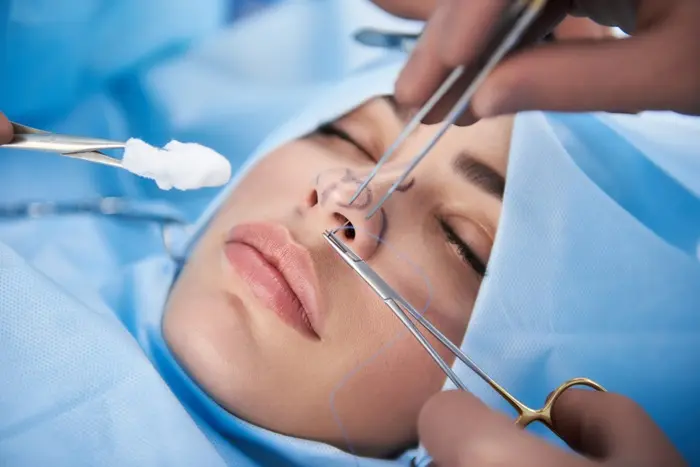Rhinoplasty, commonly referred to as a nose job, is a surgical procedure aimed at altering the shape, size, or function of the nose. It is one of the most popular cosmetic surgeries globally, sought after by individuals looking to enhance facial harmony or address nasal breathing issues. Understanding the cost factors associated with rhinoplasty is crucial for individuals considering this procedure. This article provides an in-depth exploration of the various factors that influence rhinoplasty costs, ensuring a comprehensive understanding before making informed decisions.
Factors Influencing Rhinoplasty Costs
Surgeon’s Experience and Reputation
The experience and reputation of the surgeon performing the rhinoplasty significantly impact the cost. Surgeons with extensive experience and a high reputation often charge higher fees due to their expertise and success rates. Board-certified plastic surgeons or otolaryngologists (ENT surgeons) specializing in rhinoplasty tend to command higher fees.
Geographical Location
The cost of rhinoplasty varies significantly depending on the geographical location. Procedures performed in metropolitan areas or regions with higher costs of living generally incur higher fees. For example, rhinoplasty in urban centers like New York City or Los Angeles may cost more compared to smaller cities or rural areas.
Complexity of the Procedure
The complexity of the rhinoplasty procedure plays a crucial role in determining costs. Simple rhinoplasties, such as minor cosmetic adjustments, typically cost less than complex procedures involving extensive structural changes or revisions. Revision rhinoplasties, which correct previous surgeries, often require more intricate techniques and may be more expensive.
Type of Rhinoplasty
Different types of rhinoplasty procedures can affect costs. Primary rhinoplasty, performed for the first time, is generally less expensive than revision rhinoplasty, which involves correcting or improving upon previous nasal surgeries. Functional rhinoplasty, aimed at improving nasal airflow and function, may also have varying costs depending on the extent of reconstruction required.
Anesthesia and Facility Fees
Anesthesia and facility fees are additional costs associated with rhinoplasty. These fees cover the use of operating room facilities, anesthesia administration, and post-operative recovery care. The type of anesthesia used (local, sedation, or general anesthesia) and the facility’s accreditation and amenities can influence overall costs.
Average Cost of Rhinoplasty
National Average Costs
According to the American Society of Plastic Surgeons (ASPS), the average cost of rhinoplasty in the United States is approximately $5,500. This figure includes surgeon’s fees, anesthesia, facility fees, and follow-up care. However, costs can vary widely based on the factors mentioned above.
Breakdown of Costs
Surgeon’s Fees: Surgeon’s fees for rhinoplasty typically range from $3,000 to $12,000 or more, depending on the surgeon’s experience, reputation, and geographic location.
Anesthesia Fees: Anesthesia fees range from $600 to $1,000 or more, depending on the type of anesthesia administered and the duration of the procedure.
Facility Fees: Facility fees cover the cost of the operating room, equipment, and nursing staff. These fees can range from $800 to $3,000 or more, depending on the facility’s location and amenities.
Additional Costs
Additional costs may include pre-operative tests, medications, post-operative garments, and follow-up appointments. These costs should be discussed with your surgeon during the consultation to avoid any unexpected expenses.
Financing and Insurance Coverage
Financing Options
Many cosmetic surgery practices offer financing options to help patients manage the cost of rhinoplasty. Financing plans may include installment payments or medical financing through third-party providers. Patients should inquire about available financing options and carefully review terms and interest rates before committing.
Insurance Coverage
Rhinoplasty performed for cosmetic reasons is generally not covered by health insurance plans. However, if rhinoplasty is medically necessary to correct breathing problems or nasal deformities caused by injury or congenital conditions, insurance coverage may apply. Patients should consult with their insurance provider to determine coverage eligibility and requirements.
Choosing a Surgeon
Research and Consultation
Selecting a qualified and experienced surgeon is crucial for achieving safe and satisfactory rhinoplasty results. Patients should conduct thorough research, review before-and-after photos, and read patient testimonials. Schedule consultations with multiple surgeons to discuss treatment goals, surgical techniques, expected outcomes, and costs.
Board Certification
Choose a surgeon who is board-certified by recognized organizations such as the American Board of Plastic Surgery (ABPS) or the American Board of Otolaryngology (ABOto). Board-certification ensures that the surgeon has undergone rigorous training and meets high standards of competency and ethics in their specialty.
Communication and Trust
Establish open communication with your surgeon during the consultation process. Discuss any concerns, expectations, and desired outcomes. A trustworthy surgeon will provide honest assessments, educate patients about the procedure, and address questions regarding costs and financing options.
Conclusion
Understanding the factors influencing rhinoplasty costs is essential for individuals considering this transformative cosmetic procedure. Costs can vary based on the surgeon’s experience, geographic location, procedure complexity, anesthesia and facility fees, and type of rhinoplasty. Patients should conduct thorough research, consult with board-certified surgeons, and discuss all aspects of the procedure—including costs and financing options—before making informed decisions. By prioritizing safety, expertise, and realistic expectations, patients can achieve successful rhinoplasty outcomes and enhance their facial aesthetics with confidence.

